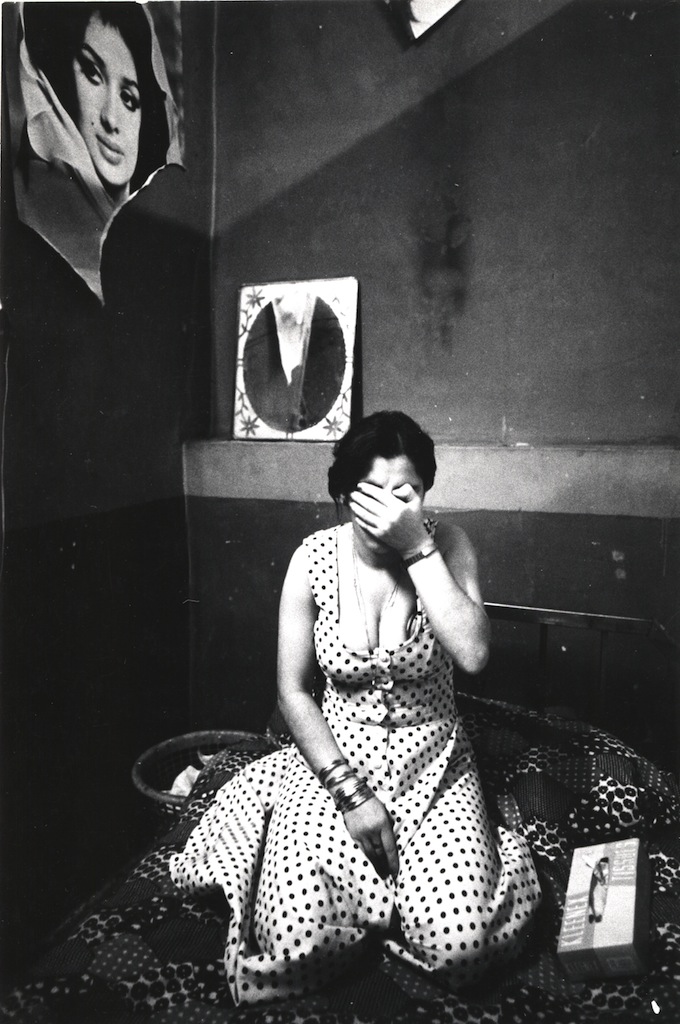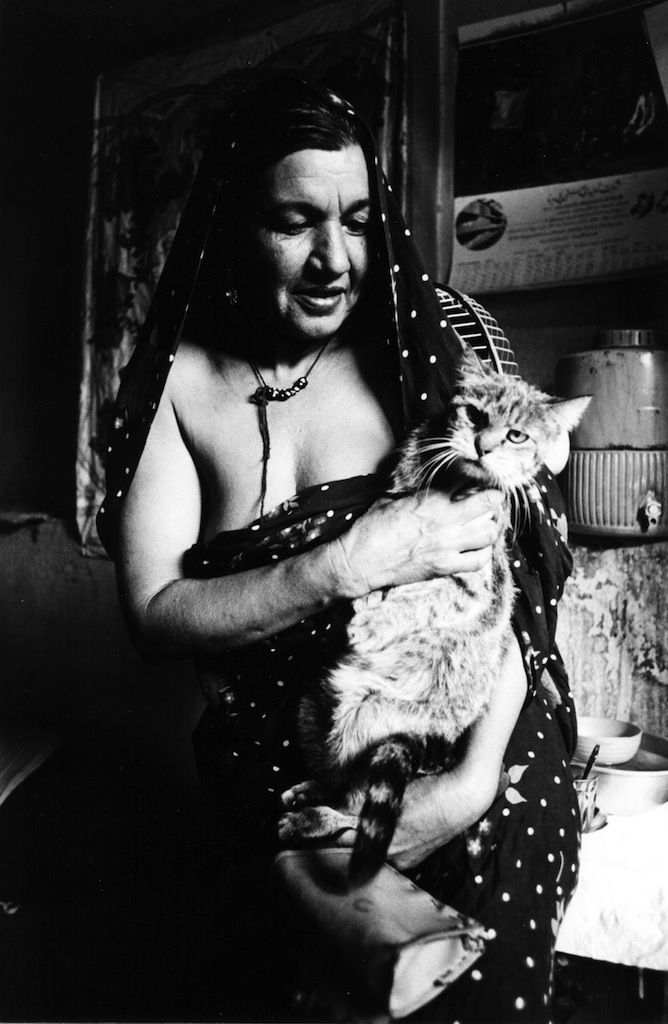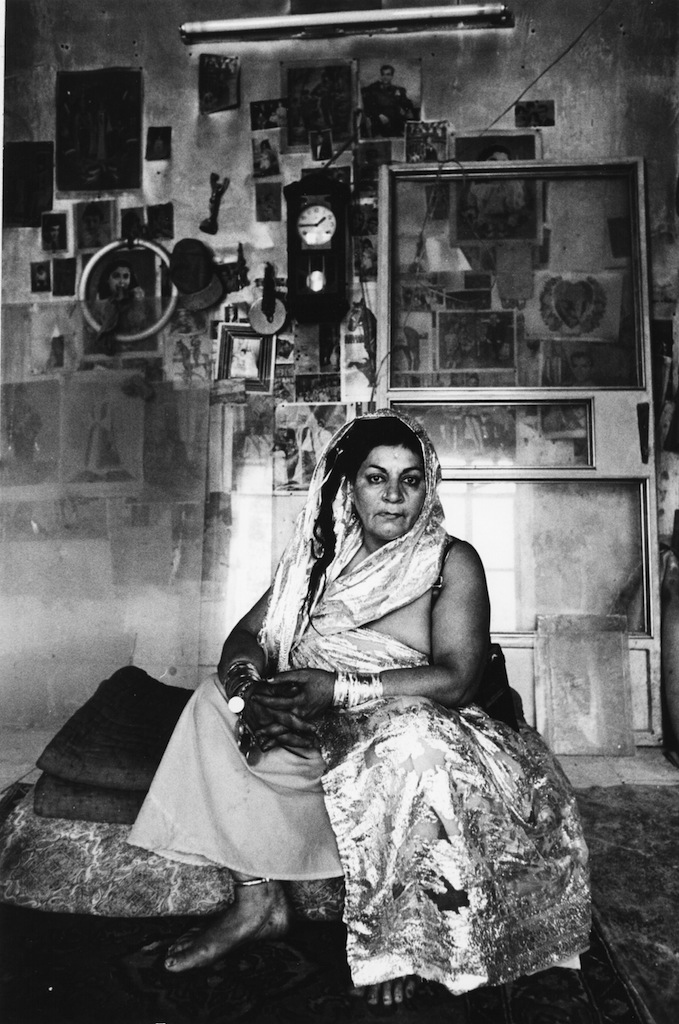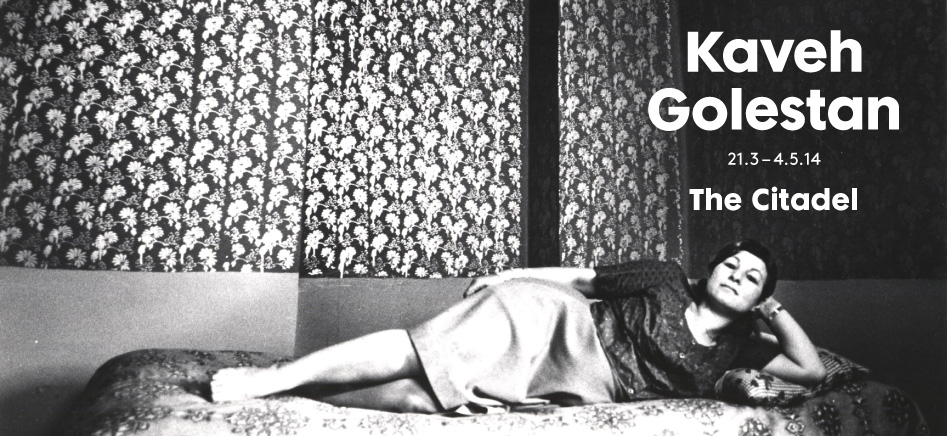AMSTERDAM. Kaveh Golestan (1950-2003) è stato un importante e prolifico fotografo documentarista iraniano e un pioniere della fotografia di strada la cui pratica fotografica ha enormemente influenzato il lavoro di nuove generazioni di artisti iraniani. Nonostante questo, il suo lavoro è stato fortemente trascurato in Europa. Una parte dei suoi reportage, dal 21 marzo al 4 maggio, saranno in mostra al Foam per “The citadel” con 45 fotografie d’epoca della serie Prostitute.

Un progetto che ha permesso a Golestan di immortalare, tra il 1975 e il 1977, le prostitute intente nel loro lavoro in Citadel of Shahr-e No, il quartiere a luci rosse di Teheran. Accanto alle fotografie anche i diari originali di Golestan, ritagli di giornale e interviste audio. La Citadel Shahr -e No (letteralmente tradotto come ‘Città Nuova ‘) era un vecchio quartiere murato a Teheran a cui si accedeva attraverso un cancello. Gli abitanti erano donne e solo gli uomini sono stati autorizzati a visitare la Cittadella. Gli scatti di Golestan sulla zona rappresentano un importante documento fotografico di questo spazio urbano: le immagini sono state scattate nel corso di due anni, un periodo in cui Golestan forgiò un rapporto di fiducia con molte delle residenti.

Kaveh Golestan apparteneva ad un ambiente intellettuale e artistico molto attivo, socialmente guidato e profondamente impegnato a questioni sociali. Ha pubblicato diverse fotografie dalla sua serie Prostitute sul giornale quotidiano iraniano Ayandegan richiamando l’attenzione sulle condizioni di vita delle donne. Nel 1978 ha anche esposto le fotografie all’Università di Teheran: solo per quattordici giorni perché poi la mostra è stata bruscamente chiusa senza alcuna spiegazione ufficiale. La serie è stata anche brevemente esposta alla Seyhoun Gallery nello stesso anno ma questa fu l’ultima volta che le fotografie d’epoca furono esposte. Tuttavia, questo non è l’ unico motivo per cui questa mostra è di grande importanza: il quartiere della Cittadella, fotografata da Golestan, è stato incendiato e demolito nei giorni della rivoluzione iraniana del 1979. Alcune donne sono state tragicamente morte carbonizzate durante l’incendio e molte altre sono state arrestate. Le fotografie di Golestan sono le ultime tracce di queste donne e dello spazio urbano della Cittadella, dove oggi sorge un parco.

Oltre a “Prostitute” Golestan ha documentato anche molti altri importanti eventi storici come il conflitto in Irlanda del Nord, la rivoluzione iraniana, la guerra Iran -Iraq e le guerre del Golfo. Nel 1979 gli è stata consegnata la Medaglia d’oro Robert Capa per la “fotografia superlativa che richiede coraggio e intraprendenza”. Mentre era in Iraq, Golestan calpestò una mina antiuomo il 2 aprile 2003. Morì nel Kifri, nel nord dell’Iraq a 52 anni. Le sue fotografie documentarie sono state principalmente presenti in reportage e libri e il suo lavoro non è stato esposto spesso. Il progetto di ricerca ”Kaveh Golestan, The Citadel” è curato da Vali Mahlouji.
English version. Kaveh Golestan (1950-2003) was an important and prolific Iranian documentary photographer and a pioneer of street photography. His photographic practice has hugely informed the work of future generations of Iranian artists but has remained seriously over-looked in Europe. Kaveh Golestan – The Citadel presents 45 vintage photographs from the series entitled Prostitute taken between 1975-1977 of women working in the Citadel of Shahr-e No, the red light district of Tehran. The photographs will be exhibited for the first time as a vintage set since 1978. Alongside the photographs, the exhibition will include original diaries of Golestan, newspaper clippings and audio interviews that he collected from and relating to the area. The Citadel Shahr-e No (literally translated as ‘New City’) was an old walled neighbourhood in Tehran, which was accessed through a gate. The inhabitants were women and only men were allowed to visit the Citadel. Kaveh Golestan’s record of the area is an important photographic document of this urban space. These images were taken over a period of two years, during which Golestan forged a trustful friendship with many of the residents. The series of portraits Golestan produced are a testament to an intimate, humane gaze into the lives and personalities of the resident women.
Prostitute series. Kaveh Golestan belonged to a very active intellectual and artistic milieu, socially driven and deeply committed to social issues. He published several groups of photographs from his Prostitute series in three extensive essays in the daily Iranian newspaper Ayandegan exposing and drawing attention to the living conditions of the women. In 1978 he exhibited the photographs at the University of Tehran for a short period lasting fourteen days. The exhibition was abruptly shut down, most probably under the pressure of the intelligence services, but without any official explanation. The series was also briefly shown in a sneak exposition in the Seyhoun Gallery stand at the Tehran Art Fair in the same year. This was the last time the vintage photographs were exhibited and they have never been seen again. However, this is not the only reason why this exhibition is of great importance.
Demolished. The district of the Citadel, photographed by Golestan, was set on fire and demolished within days of the Iranian revolution in 1979 through a decree by Ayatollah Khomeini. Some of the women were tragically charred to death during the blaze and several others were arrested and later faced the revolutionary firing squads in the summer of 1980. The revealing photographs made by Kaveh Golestan are the last traces of these women and the urban space of the Citadel. The area was flattened and in an act of memory erasure converted into a park which stands today.
Historical events . Besides Shahr-e No, Kaveh Golestan also documented many other major historical events like the conflict in Northern Ireland, the Iranian revolution, The Iran-Iraq War, and the Gulf Wars. In 1979 he was awarded the Robert Capa Gold Medal for “superlative photography requiring exceptional courage and enterprise abroad”. He wasn’t able to pick up the award until thirteen years later, as by then the work was no longer considered a threat to the Iranian government. While he was on an assignment in Iraq Golestan stepped on a fatal landmine on 2 April 2003. He died in Kifri in Northern Iraq. He was 52 years old. His documentary photographs have mainly been featured in reportages and books and his work has not been exhibited often. The Kunsthal (Rotterdam) showed the exhibition Kaveh Golestan 1950-2003. Recording the Truth in Iran in 2008.
Research project. Kaveh Golestan The Citadel is curated by Vali Mahlouji. This is the first iteration of an on-going curatorial and research project entitled ARCHAEOLOGY OF THE FINAL DECADE. This larger project investigates the artistic milieu and intellectual conditions of the final decade before the fall of the shah in 1979 – the pre-revolutionary moment – in Iran. The project re-circulates and reincorporates historical and cultural material – destroyed, banned or under-represented, yet historically significant – back into cultural memory and discourse.
Kaveh Golestan – The Citadel can be seen from 21 March – 4 May 2014 at Foam.


